Modulation effects are very prevalent in all spheres of music. These effects are used as individual units in instrument and live audio rigs, and they are used as digital effects on recorded music as well.
However, modulation effects can be difficult to understand. It is a good idea to get a sense of how they work before using them.
Modulation effects in music are made by duplicating an audio signal, adding a delay to the duplicated signal, and affecting that signal with a low-frequency oscillator to change its frequency range, pitch, and timing. Modulation effects include reverb, chorus, echo, and vibrato.
There are several types of modulation effects, as the process of modulation can be used in several ways. All modulation effects have the same fundamentals, but the process is used to create a wide variety of effects.
Let’s explore modulation effects to learn more about them, how they work, and what they can be used for.
What Are Modulation Effects?
Modulation effects are everywhere in music – but not everyone understands what they are or how to use them. Before we learn what the different modulation effects are, it is important to understand what modulation in audio is.
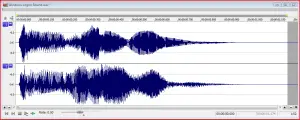
All modulation effects follow the same basic principle. The original audio is duplicated by the effects processor and is controlled, or modulated, by a low-frequency oscillator, or LFO.
The duplicated audio signal is slightly delayed and added back on top of the original audio. The LFO modulates how the duplicated and delayed signal is affected by changing its pitch at specific intervals over time.
The various modulation effects are created by either duplicating the audio multiple times with various levels of delay or by changing the time of the delayed audio duplication (repetition and delay).
When a duplicated and delayed signal is added or layered to the original signal, it cancels out some of the signals on a frequency level, which completely changes the way the original audio signal sounds.
Combining these audio signals creates a new sound that is otherwise impossible to generate while also preserving the original audio signal.
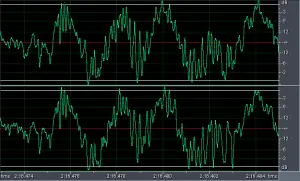
Modulation effects can therefore be used to entirely replace the original audio. They can also be used with the original audio and blended in to create different levels of effect depth.
Examples Of Modulation Effects
Now that we have established what modulation effects are and how they are produced let’s look at some examples of these effects that are commonly used in music generation and production.
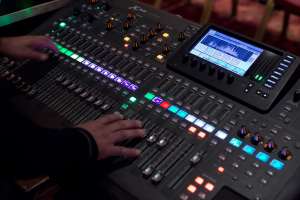
Modulation and LFO processing results in several types of modulation effects by varying the parameters of the modulation in the audio signal.
Some of these effects replace the original audio signal with the new signal generated by the effect, some modify the existing signal, and some produce a new signal that works in tandem with the original signal.
Some of the most widely used modulation effects include the following:
- Chorus Effects
- Echo Effects
- Reverb Effects
- Vibrato Effects
- Phaser Effects
- Flanger Effects
- Tremolo Effects
- Wah Effects
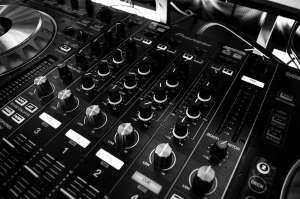
Each of these effects has a different sound and is used in different ways in a musical context, be it during live performances, in generated digital music, or in post-production of recorded music.
Modulation effects such as reverb, echo, and chorus produce multiple delayed audio tracks that are produced over the original track to produce:
- the repeating sound of an echo
- the reverb sound of multiple sounds reflecting from multiple surfaces
- the sound of multiple notes played in harmony in a chorus effect
Effects such as phasers, flangers, and even tremolo replace the original signal with the modulated signal. Tremolo only affects the duplicated sound with an LFO signal to change its pitch rapidly up and down.
Flanger and phasers duplicate and delay the audio while affecting it with an LFO to change its frequency, pitch, and phase repeatedly over time.
All of these effects sound completely unique and are very useful in a musical context. There are lots of possible combinations, even when only a few parts of the song are altered with these modulation effects.

The way modulation effects are used is entirely up to the preferences of the musician or producer. They can be used to create various results in music – regardless of the genre.
Are Modulation Effects Useful?
Modulation effects are widely used in all areas of the music industry, and they may even be present without you realizing it. The effects have become so much a part of the music that we hear today that most music would sound strange without them.
Modulation effects are very useful in music. These effects are used in individual effects units for instruments (such as guitar and bass stompboxes).
They are also built into stage pianos and synthesizers – and they are a standard within every DAW used for creating, recording, and producing music.
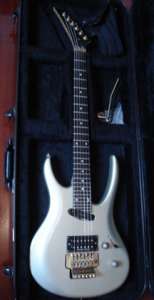
Using these effects can add excellent dynamic range and depth to your music. A track without modulation effects can be instantly elevated and significantly improved with their use.
Modulation is intended to add life and complexity to music. When it is used creatively in the right context, modulation can be the most important tool in a producer’s hand.
Without modulation, modern music would sound lifeless, flat, and boring. Every sound of reverb or echo that you hear in a recording and every echo that you hear in an EDM track is made with modulation – without it, music would not be the same.
All of this means that modulation effects are extremely useful in all areas of music. Every musician and producer uses modulation in some form. Everyone learning to use these effects should take them seriously and learn to use them well.
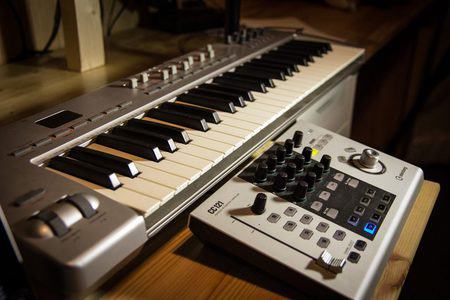
Conclusion
Modulation effects are everywhere in music. They are defined as a group of effects that are generated by duplicating an audio signal, adding delay, and using a Low-Frequency Oscillator to affect the signal in various ways.
Every modulation effect is useful, but the most used versions of modulation are reverb, chorus, echo, vibrato, and tremolo. These effects can be seen in all genres of music and have come to define the sound of modern music as we know it.
You can learn about spectral effects here.
You can learn about MIDI and controllers here.
You can learn about audio mastering (and how it differs from mixing) here.
You can learn how to make beats here.
